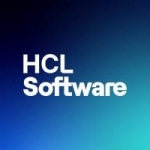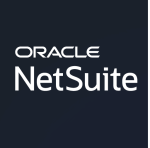
Director of eCommerce at a tech company with 51-200 employees
Lessons Learned from Launching an Online Store on Magento
For my day job, I manage a number of online properties, including a couple of online stores. We recently relaunched our main ecommerce store, Supercircuits.com, on Magento Enterprise Edition. Here are my thoughts about the experience.
The Supercircuits website was running on an custom-developed ASP.Net ecommerce platform, which I inherited when I joined the company. Over time it had become increasingly unwieldy, hard to update, and buggy, and I was desperate to move on to a more modern ecommerce platform.
I'd been interested in Magento for a while as it appeared to meet all of our functional needs as well as being very affordable, and so, after a short period of due diligence, we embarked on an implementation of the Enterprise Edition.
Little did I know then, that it would take over a year to launch the site. But that's what happens when you combine a very small team, with a lot of operational responsibilities, with the requirement to integrate with an internal order management system that's about 10 years old.
Lesson learned #1: If you are about to embark on a major Magento implementation, I highly recommend making use of their consulting services at the outset. An architectural advisory will set you back a few thousand dollars but will make sure you pick the right architecture plan so that your implementation goes more smoothly. We did a lot of learning as we went, which slowed progress as you might expect.
Another challenging area was the migration of product data from the old site. Although we have a little under 1,000 SKUs, because they represent video surveillance equipment, they each have a lot technical specs along with various other complexities.
We had originally intended to manage product data programmatically via a centralized master data management system, but in the end, this proved too much to try and implement along with everything simply developing and launching the site.
As a result, we did not make proper use of attribute sets for classifying different product types, the results of which we are living with today (one day we will have the product comparison tool set up correctly). On reflection, we would have been better off entering all the product data manually and using the extra time to clean up the organization of our technical specs.
One area where we did make the right decision was not to attempt a complete site redesign at the same time. The relaunch was intended to be a "copy exact" — use the base Magento Enterprise store template and overlay our design on top of it. This worked pretty well, as the base Magento template looked nicer than our old site anyway, and we were able to make some further visual improvements in addition to this.
The good news is that we are now in a place were we can start making some more aggressive site design enhancements, now that the back-end heavy lifting has been completed.
A significant reason to move to Magento is its extensibility and the wide range of extensions that have been developed for it. If you can think of a feature, chances are someone has developed an extension for it. The great thing about this is that it reduces implementation time and cost for new features dramatically. I'm like a kid in a candy store with all the additional ecommerce capabilities that are now available to me.
Lesson learned #2: Not all extensions are created equally. I recommend limiting the number of extension vendors you use so that you can be confident in their quality and reduce the potential for code conflicts. We have mostly used extensions from aheadWorks and Amasty. Not only do they create great products, but the support of both vendors so far has been excellent.
Another reason I like Magento is that, as with Google Analytics and Wordpress, because the basic edition is open source it has a huge install base with lots of people developing for it, figuring things out, writing blogs and tutorials, and answering questions.
Consequently, if you have a question about or an issue with Magento, it's likely that someone has run into it and someone else has come up with a solution. The value of this wealth of information cannot be overstated.
One final downside of the extended development time for this website launch is that Magento Enterprise has moved on to version 1.12 while we are still on version 1.10. I do not intend to underestimate the effort to upgrade to the latest version, but it is something that we will need to tackle in the near future. If you don't, as you move further away from the current version, the cost and effort to upgrade just gets larger and more daunting.
A feature that we intend to take full advantage of over the months ahead is Magento's multi-store capability. At some point in the future I intend to have all of our sites running on the Magento platform which will be a huge efficiency gain for my team in terms of managing multiple websites and stores with a common product set.
One area where we have learned a lot is in regards to SEO. While we did all that we could in terms of onsite SEO, we (by we, I mean I) only redirected about 1500 URLs in our htaccess file. However, we have thousands of old product documentation PDFs which I did not have the time or will to get to before the launch which were still receiving links and traffic.
As I started seeing 404 errors pop up in Google Analytics for those pages and files, I began a multi-week process of updating the htaccess file, so that we now have over 6000 redirected URLs.
I am now keeping our htaccess file updated on a monthly basis by running the URLs being redirected to through Xenu's Link Sleuth, which lets you check an imported list of links (very handy). As redirected URLs break (for example, when products are discontinued and are removed from the site) I'm updating the redirect to keep it working. It's very manual, but worth it in my opinion.
We're now on a two-week release schedule for new features, which is aggressive but achievable. One module that we are replacing as soon as possible is our site search. Magento's default search algorithm is garbage. Incredibly, instead of using AND for an operator it uses OR, which means that the more terms you use to refine your search, the more results you get. It's completely backwards!
There is a truism when it comes to learning Drupal — once you've built your first site, throw it away and use what you've learned to build it again correctly. There were a few times along the way that I thought this about our Magento development process as there is certainly a learning curve and a 'right way' to architect it.
Now that we've launched, I've certainly got no regrets about choosing Magento as an ecommerce platform, and I'm looking forward to everything we can do to expand and enhance it.
Disclosure: My company does not have a business relationship with this vendor other than being a customer.
Principal Consultant at Digital Web Advisors Pvt Ltd
Intuitive user interface however it has been dogged by performance issues and is also known for system complexities
The fastest growing eCommerce platform in the recent past, Magento is a PHP based Open Source eCommerce platform. Magento is also the youngest member of the eCommerce platform family; that said the brains behind the product have been around in the industry for quite a while – and that experience quite as well reflects in the product offering.
Magento offers a rather unique combination of a broad set for out-of-box ecommerce features and an intuitive user interface. This comprehensive feature set covers most aspects of an eCommerce solution including product and catalog management, order management, marketing and promotions, customer self-service, user management as well as customer support functions. These features not only allow merchants to deploy simple yet feature rich eCommerce storefront rather quickly, but also provide the backend admin interface with the toolset to allow you to manage your ecommerce operations effectively. This combination is not too common in the product segment that it is most popular in – the small and medium eCommerce platform segment.
Magento is well suited for direct to customer storefronts that offer a limited number of products to its customer like Boutique storefronts, single or Multi-Brand storefronts, Manufacturers and the likes. Magento however is not the best solutions for merchants who offer a large number of products (above several thousands) like large retailers or enterprises that need tight integration of eCommerce with their enterprise systems.
Magento offers three editions as well as a SaaS offering which serve as a cost effective alternative options for customers who are just starting on their eCommerce journey and are not willing to invest in large enterprise solutions.
Do remember that Magento has been dogged by performance issues and is also known for system complexities – the primary source of Magento’s limitations and shortcomings.
Vendor Summary
Magento traces back its root to Varien Inc. – a company originally founded by Roy Rubin in 2001 and later joined by Co-Founder Yoav Kutner. The company worked on osCommerce (an Open Source e-Commerce project) however the team wasn’t too satisfaction with osCommerce as a platform. In 2006 Varien planned a fork from osCommerce but then later dropped the idea and decided to build a completely new e-Commerce platform from scratch. This development work began in January 2007 on what is now known as Magento and the first beta version was release on 31st August, 2007. The product was well accepted and the first stable release on 31st March, 2008. In January 2009 itself Magento was names as an ‘Emerging Player to Watch’ by Forrester in ‘Forester Wave: B2C eCommerce Platforms, Q1 2009’.
Varien was officially renamed at Magento in 2010, around the time when eBay bought a 49% stake in Magneto in March 2010. The minority stake buy out wasn’t officially disclosed until a 100% acquisition by eBay in July 2011. While the official figures are unknown, unconfirmed reports claim that the acquisition was prices at $180M US. This acquisition seems to have been part of eBay’s X.Commerce strategy and Magento is expected to be an important component of it.
While this is defiantly good news for Magento – the eBay support and funding will give Magento an opportunity to fire all its cylinders and accelerate its growth; do keep in mind that eBay has also recently acquired other ecommerce product like GSI Commerce (for $2.4billion) and Intershop (majority stake only of 27%).
Product Summary
Magento is a PHP based Open Source eCommerce platform – licensed under Open Software License (OSL 3.0). Magento eCommerce offering is available in three editions – Magento Community, Magento Professional and Magento Enterprise edition. Of these Magento Community is the freely available open source editions; the other two are commercial open source editions – have an enhanced feature-set, maintenance, supports and come with a price tag. Magneto also offers a hosted SaaS service ‘Magento Go’ that helps customers gets started on their eCommerce journey rather easily.
Magento’s first stable version was released on 31st march 2008 and has been rapidly gaining popularity ever since. In April 2009, Magento launched its commercial open source offering ‘Magento Enterprise Edition’ – this version has a border feather set and complemented with a support services agreement. This was followed by the release of Magento Mobile platform in September 2010 – the platform allowed developers to easily create native storefront applications for mobile devices. These mobile apps tightly integrated with their Magento eCommerce platform.
Keep in mind that Magento is undergoing constant evolutions with new features getting added at a fast pace.
Technology
Architecture
Magento has been built on the LAMP (Linux, Apache, MySQL and PHP) however it also runs on Windows. Magento has been built using the popular Zend framework. One the most important unique selling point (USP) of Magento is its flexibility – Magento adopts OOPs standard, Model View Controller (MVC) architecture and Event-Driven Architecture (EDA) enabling loosely coupling of the various layers and components. Magento also implements Entity-Attribute-Value (EAV) data model instead of the traditional RDBMS data model. While these architectural decisions bring in significant flexibility into the system; on the down side they result in an equally complex system that’s a difficult to customize and extend. As a result the platform is also known to be sluggish and requires a heavy hardware footprint.
Architecturally Magento can be considered as a collection of modules – each module is an independent application implementing MVC. MVC implemented in Magento is not the traditions MVC implemented in Java or PHP – it implements configuration based MVC. This means that each module’s is governed by a config.xml – the module will only load the classes / configuration explicitly declared in the file. Unlike the conventional MVC is will not automatically load a class once added in the module codebase.
Magento model implements Object Relational Mapping (ORB) that allows you to manage your database directly from your PHP code – no longer need to write SQL queries. Nevertheless a Magento model also comprises your business logic – something that’s traditionally delegated to the Controller. Magento Models can be classified as traditional Table-Column-Record model and the EAV model that’ spans across multiple table.
Unlike tradition controllers, Action Controllers in Magento MVC do not pass data object to View. Instead, Views are broken up into Templates and Blocks (see Templates section). Blocks are PHP objects that handle data while templates handle the presentation of this data – it is a combination of HTML and presentation related PHP.
Similar to other LAMP/WAMP offering, installation is a pretty straight forward process. Do however ensure that system prerequisites have been met.

Figure 1 Magento offers an easy wizard like step by step installation process.
Security
Out of box, Magento used its native authentication and authorization system. It allows you to register customer for your storefront as well as user for Magneto’s administration interface. Magento user management allows you to define your own custom Roles – these roles can be granted access to granular level access to individual Magneto resource allowing you to create a strong authorization model for your stores.
Surprisingly though Magento does not support integration with external or enterprise authentication systems like OpenID, LDAP or Active Directory.

Figure 2 Administrators can define custom roles and grant them access to only the required resources.
Disclosure: My company does not have a business relationship with this vendor other than being a customer.
Buyer's Guide
Adobe Commerce
October 2025
Learn what your peers think about Adobe Commerce. Get advice and tips from experienced pros sharing their opinions. Updated: October 2025.
868,787 professionals have used our research since 2012.
Developer at a insurance company with 51-200 employees
Limited design options and theming but includes quick and easy support
Magento Go
Recently I’ve had the opportunity to implement ecommerce solutions for two small companies in the Denver area. Both companies had an existing ecommerce platform with limitations in functionality, performance, and reliability, and it was time to move onto a more professional platform. The clients that I work with generally don’t have an IT department to handle server maintenance, so I was solely interested in hosted solutions with live support.
There are three big players in the market of hosted ecommerce platforms: Volusion, Shopify, and Magento Go. Any of the three would have fit our needs, so it came down to which offered the most for the best price. Magento Go won out this time around.
Having implemented two sites, here are my thoughts on what I like and what I dislike about Magento Go.
Good
- Support has been very good. Whenever I’ve run into questions about the platform, I can join a chat session with their help desk and have an answer quickly and easily.
- Product options are excellent. Having worked on several platforms, this is an area where lesser platforms fall down – you just can’t get them to do what you need for a given array of products. Not so with Magento Go, I’ve been able to accomplish everything I’ve needed with a wide variety of products and product types.
- Very flexible coupon/discount abilities. Running coupon and discount codes is core to online campaigns. Magento Go is flexible enough to handle any type of discount we’ve run.
- Integration with MailChimp. I love MailChimp and it is a requirement in my mind to have an email sign up form that seamlessly integrates with our MailChimp lists. Magento Go does that perfectly.
- Active community. The Magento community is consistently coming out with new videos, articles, and documentation on how to improve your site. The one caution I have is that much of the focus goes towards the enterprise and community edition of the product, less so towards Magento Go. I’d love to see more of the plug-ins make it to the Go version. Hopefully with time they will. I still count the community as a positive.
Bad
- Limited design options and theming. There are more themes coming out every month or so, and with the ability to add in your own css and javascript support, this limitation can be overcome. However, designing for Magento is cumbersome and more difficult than it needs to be. I would like to see more granular design control over the theme – the ability to take an existing theme, and more easily modify it to create a unique site.
- No Responsive Design. At the time of writing this, I haven’t seen a Magento Go site that is anything near responsive. Perhaps in the future, themes will be coming out that are responsive. I would personally cringe at the thought of trying to modify an existing theme to be responsive given how cumbersome modifying a theme is. This is a major area of need.
- No support to host .pdf files. This seems like a no-brainer. There is the ability to upload photos, but not .pdfs. So for product documentation or other information that often exists on a site, it has to be hosted elsewhere. Big bummer.
- Email Templates. Though the email templates are fully customizable, you have to first make a copy to customize it, then associate the new copy to the event that kicks off that email. There are several events that kick off different emails, so to change something as simple as a common word across all templates, you have to make a copy of each template, fix the word, then change all events to use the new copy instead of the old. To change one word could be a half hour of work. I’d like to see the ability to just alter each original email template to my needs.
- Featured Products on the homepage. There is no way that I know of to have featured products on homepage, only new or recently viewed. There is a plug in that provides this functionality, but it’s at an additional cost. I’d like to see this built-in.
- Lack of documentation on page layouts. The page layouts appear to be very customizable. For the enterprise version of Magento there are plenty of examples of how to customize, but the layouts work differently in Magento Go. I’d like to see better documentation on this area to allow me to take better advantage of this feature.
- No attribute template. If you have several products that have similar attributes, you have to enter the different attributes for each one. I’d like to see the ability to set up a template and just inherit from a given template to help save time.
- Footer links have to be there. I’m not a fan of design decisions being made for me. I can hide the links with some jQuery magic, but that’s a hack. Just give me complete control over the look and feel of my site.
- No intrgration with Quickbooks payment gateway. The Quickbooks payment has some nice features that Paypal doesn’t have, at least if you are a Quickbooks user. It would be nice to see this gateway added.
Disclosure: My company does not have a business relationship with this vendor other than being a customer.
it_user75174Senior Manager of Web Development at a real estate/law firm with 1,001-5,000 employees
Vendor
Good review, I'm evaluating Magento GO having used PRO for several years I'm concerned about restrictive theme and plugin options so considering Volusion and Shopify as alternatives. No responsive design? There are new themes on the market now but from what I've tested they'd require customising to improve user experience.
IT Administrator at a tech services company with 51-200 employees
Magento is the best open source, fully-featured eCommerce platform which can be tailored to fit your needs
Valuable Features:
・ Comprehensive and feature rich ecommerce platform : Magento is generally considered to be the most advanced e-commerce program available in the market. This means that if your business has some complex needs that must be met, Magento is probably the platform that will be able to do it.
・ Open Source : One of the biggest advantages of using Magento is that it is an open source program. With an open source code such as this, it makes it possible for you to modify the platform to fit your needs.
・ Community : Magento has a large community of developers, users, and providers. Since it is an open source project backed up by a huge community, it has gone through a number of upgrades over the years
・ Integration : Magento can easily be integrated into many other third-party resources.
Room for Improvement:
・ Very Complex : Although having a lot of features with your e-commerce site may be nice, the Magento platform is very complex. Because of this, it may be difficult to figure out how to use it.
・ Not Many Good Developers : Because of the complexities of the platform, there aren’t really that many good developers in the industry. Good Magento developers are difficult to find. If you are in the market for a developer, you may have a hard time finding someone who can meet your needs
・ Needs the Right Environment : Magento has to be hosted in the perfect environment to work properly.Since it is such a big and complex platform, it needs to be hosted on a good server.People who are using Magento first time, will find it difficult to install on a server and setup properly.Magento is an open-source platform that makes it possible to create a fully-functional e-commerce site.I have installed myself the Magento couple of times and to be frank it is not easy to install, but it works flawlessly once it is installed successfully.
Other Advice:
Magento is on the top of the list of preferred eCommerce solution globally. More and more companies now prefer Magento as their eCommerce platform when it comes to using open source eCommerce solution. It's used by 30,000 merchants and is the world’s fastest growing eCommerce platform.
Disclosure: My company does not have a business relationship with this vendor other than being a customer.
Magento also supports various shopping addresses for the online shopper's convenience within a single transaction.
Developer at a tech company with 51-200 employees
An excellent and one the most popular and used Open Source eCommerce software platform.
Valuable Features:
1) Magento uses latest technologies such as PHP 5 and the Zend framework.2) It Supports Multi-Store, Multi-Currency, allows several price lists and tax rates according to location, customer group and product type, and it also manages the product inventory.3) Magento is very user friendly due to its various functionalities like one page checkout, comparison between products and also gives liberty to users to share the reviews on purchased products.
Room for Improvement:
1) The learning curve is bigger as it comes with various features and functionalities.2) Magento's directory structure is complex and can be time consuming to understand.3) Magento application consumes gigabytes of RAM when executing heavy processes, and PHP often cannot handle the load. 4) There are some performance issues, particularly on smaller and single servers.Despite of having some drawbacks, Magento proves to be one of the most popular choices for eCommerce platform and attracts many organizations and users worldwide.
Other Advice:
In order to get good performance and speed, the magento application should be hosted on good or dedicated servers which provide high bandwidth and up time.
Disclosure: My company does not have a business relationship with this vendor other than being a customer.
Technical Architect at a consumer goods company with 51-200 employees
A powerful and scalable platform for developing e-commerce websites
Pros and Cons
- "The platform provides an easy way to customize its features."
- "The product needs to improve its security. Also, they need to improve B2B features."
What is our primary use case?
I use the solution for mainly B2C e-commerce. We use the product to develop e-commerce websites.
What is most valuable?
The platform provides an easy way to customize its features.
What needs improvement?
The product needs to improve its security. Also, they need to improve B2B features.
For how long have I used the solution?
I have been using the solution for ten years.
What do I think about the stability of the solution?
The platform is stable.
What do I think about the scalability of the solution?
The solution is scalable. My company is big and we have plans to increase the platform’s usage.
How are customer service and support?
I have no issues with the tool’s tech support.
How was the initial setup?
The solution’s setup is not complex. It’s just like any regular platform implementation. The number of people required for the platform’s implementation depends on the size of the project.
What was our ROI?
We have seen ROI with the solution’s use.
What other advice do I have?
I would rate the solution a seven out of ten. Magento is a powerful platform with many options for customization. It is a competitive platform compared to other similar products. Before making a decision with Magento, you need to investigate other platforms. You need to choose a platform depending on your needs and industry type.
Which deployment model are you using for this solution?
Hybrid Cloud
Disclosure: My company does not have a business relationship with this vendor other than being a customer.
Buyer's Guide
Download our free Adobe Commerce Report and get advice and tips from experienced pros
sharing their opinions.
Updated: October 2025
Product Categories
eCommerce PlatformsPopular Comparisons
SAP Commerce Cloud
Salesforce Commerce Cloud
Shopify
Oracle ATG
HCL Digital Commerce
Oracle Commerce Cloud
Spryker Systems
Sana Commerce
KIBO B2B eCommerce Platform
OroCommerce
Microsoft Commerce Server
Intershop
Elastic Path
NetSuite SuiteCommerce
Buyer's Guide
Download our free Adobe Commerce Report and get advice and tips from experienced pros
sharing their opinions.
Quick Links
Learn More: Questions:
- Powerfull eCommerce Systems
- Magento vs. Demandware - which one is better for a rapidly growing eCommerce site?
- When evaluating eCommerce Platforms, what aspect do you think is the most important to look for?
- Magento vs. Demandware - which one is better for a rapidly growing eCommerce site?
- What is your go-to marketing software?
- What are the best ecommerce platforms?
- Which e-commerce platform do you recommend for a B2B company?
- Do I need an ecommerce platform to sell online?
- What is the best eCommerce Software for a small business?
- Why is eCommerce Platforms important for companies?

















Great review, thanks for share valuable information about user interface.